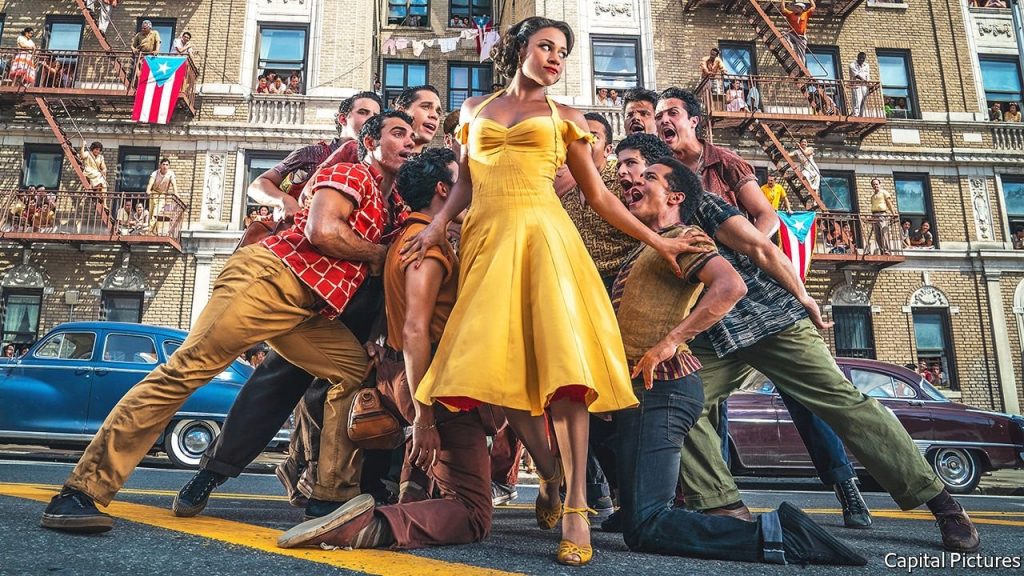In 2021, the COVID-19 pandemic wreaked havoc on the film industry. Films scheduled for 2020-21 got stuck in limbo (Morbius, Top Gun: Maverick); big and small theatres faced bankruptcy, and the paradigm shift of theatrical releases to streaming has only begun.

The 94th Academy Awards is an opportunity to celebrate the best films that have been overlooked in a year where only IP-driven shlock has enjoyed box office success. For your consideration: West Side Story.
West Side Story
Stephen Spielberg’s legendary filmography crosses between the best of science fiction (Minority Report, War of the Worlds), political dramas (Lincoln, The Post), and the uncanny valley (The Adventures of Tintin, Ready Player One), so it is no surprise that he has finally graced us with his first musical, and it is a musical through and through. Characters often sing dialogue, and dance numbers are long and meticulously choreographed.
Spielberg embraces musical conventions; this is no La La Land or Rocketman. He wanted to direct West Side Story since he was a child, and he intended to do it well.
Spielberg brings new life to classic songs like “Tonight” and “America” with contemporary choreography and cinematography. The dancing, choreographed by Justin Peck, is precise and expressive.
Spielberg leans heavily into dance in the music number for “Mambo” to communicate the rivalry between the Jets and the Sharks. Turn, slide, jump, twirl, slash. The war is fought on the dance floor. It is the most electrifying scene, and there is little dialogue. Dance is the language. Janusz Kaminski (director of photography) understands the urgency and grace of the dance moves. The camera only holds still for the obligatory close-up.
The use of wide shots in “Maria” and “Tonight” deserves a whole column. I melted in my seat during a wide shot of Elgort standing in a sparkling puddle.
Despite the film being an adaptation of the 1957 Broadway play, it is important to acknowledge the legacy of the 1961 film adaptation directed by Robert Wise and Jerome Robbins.
It is widely considered one of the greatest musicals ever made, and its influence on Spielberg’s interpretation is evident. In the ’61 film, the actors playing Puerto Ricans wear dark brown makeup (even Puerto Rican actress Moreno) and there is little dialogue spoken in Spanish.
The racism is ironic given the film’s subject. Spielberg and writer Tony Kushner give power back to the Latino community by featuring an excellent leading and supporting cast of Latino actors.
The Spanish dialogue is not subtitled, approximately 30% of the film. I watched the movie in South America upon its initial theatrical release, and one older member of the audience yelled out mid-way through, “This is West Side Story!”. No, it is not. It is what it always should have been.
West Side Story will not win Best Picture. The award is reserved primarily for the safest and most provocative film of any given year, and there is no in-between.
However, West Side Story will endure beyond this awards season because it is not only an exciting musical.
It is a thought-provoking examination of how division is rooted in hate. We cannot love or heal if tribalism defines us.
The film is now streaming on Disney+ and available to rent on Apple+, Amazon, and Microsoft.


